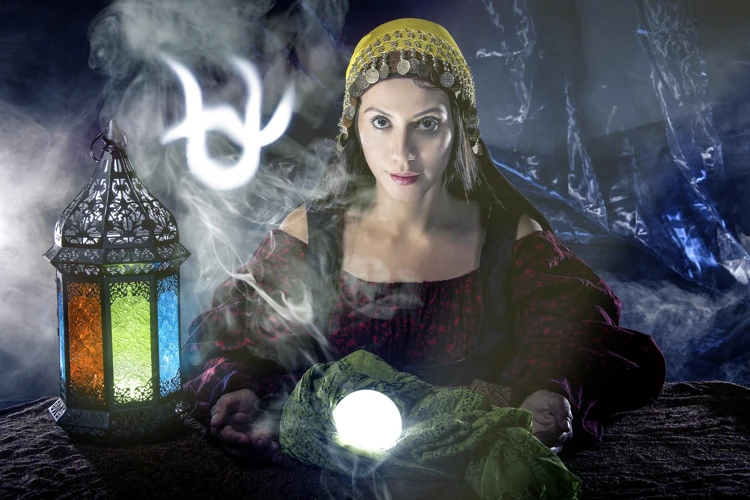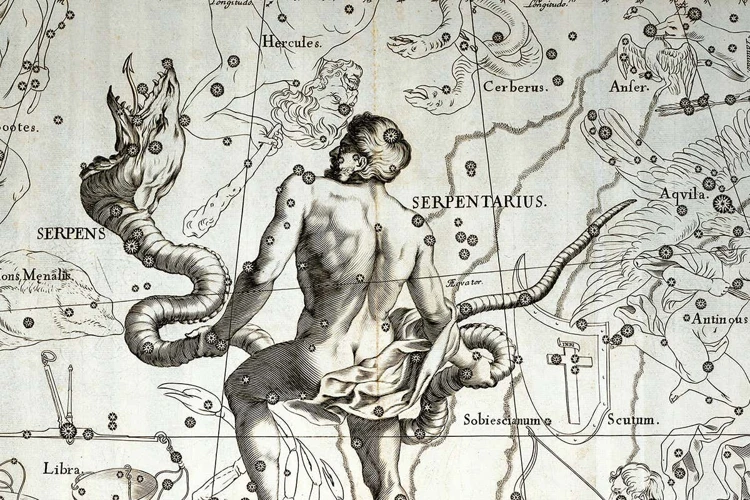The world of art is full of mysteries and hidden meanings, and one area where symbolism and imagery have played a significant role is in the representation of zodiac signs. From ancient times to the Renaissance period, artists have incorporated these celestial symbols into their works, adding layers of meaning and intrigue. In this article, we will explore the historical background of zodiac signs in art, delve into the symbols and meanings of each individual sign, examine how they have been used in different art forms, and unravel the deeper symbolism behind their inclusion. Join us on this journey through the fascinating world of zodiac signs in historical artworks.
Contents
- The Historical Background
- Symbols and Meanings of Zodiac Signs
- The Use of Zodiac Signs in Art
- The Symbolism in Artworks
- The Influence of Zodiac Signs in Art
- Conclusion
-
Frequently Asked Questions
- 1. How were zodiac signs determined in ancient civilizations?
- 2. What is the significance of zodiac signs in astrology?
- 3. How were zodiac signs represented in Medieval and Renaissance art?
- 4. What are some common symbols and meanings associated with zodiac signs?
- 5. How did zodiac signs influence architectural designs?
- 6. Are zodiac signs still relevant in modern art?
- 7. Can zodiac signs be interpreted differently in art?
- 8. Were zodiac signs used in religious rituals?
- 9. How can one incorporate zodiac signs into their own artwork?
- 10. Can zodiac signs be seen as storytelling devices in art?
- References
-
Frequently Asked Questions
- 1. What is the historical significance of Zodiac signs in artworks?
- 2. How did Zodiac signs originate in ancient times?
- 3. How did medieval and Renaissance artists incorporate Zodiac signs into their art?
- 4. What does the Aries Zodiac sign symbolize in historical artworks?
- 5. What symbolic meaning does the Taurus Zodiac sign hold in historical art?
- 6. How is the Gemini Zodiac sign represented in historical artworks?
- 7. What significance does the Cancer Zodiac sign have in historical art?
- 8. What does the Leo Zodiac sign signify in historical artworks?
- 9. How is the Libra Zodiac sign portrayed in historical art?
- 10. What is the symbolic representation of the Pisces Zodiac sign in historical artworks?
- References
- Read More
The Historical Background

The origins of zodiac signs can be traced back to ancient civilizations such as Mesopotamia, Egypt, and Greece. These early cultures observed the movements of celestial bodies and assigned symbolic meanings to the constellations they formed. In Mesopotamia, for example, the zodiac signs were associated with the twelve months of the year, each representing different agricultural activities and natural phenomena. In Egypt, the zodiac signs were linked to their gods and goddesses, playing a role in religious rituals and astrological predictions. It was during the Medieval and Renaissance periods, however, that zodiac signs gained prominence in art, as artists incorporated them into paintings, sculptures, and even architecture. These artworks served to convey a deeper understanding of the cosmos and the interconnectedness of nature and human existence. The symbolism and imagery of zodiac signs continue to captivate artists and art enthusiasts to this day, as they explore the intricate relationships between the celestial and earthly realms.
Ancient Origins of Zodiac Signs
The ancient origins of zodiac signs can be traced back to the early civilizations of Mesopotamia, Egypt, and Greece. These cultures observed the movements of celestial bodies and recognized patterns in the sky, which they believed held significant meaning. In Mesopotamia, the zodiac signs were closely tied to the twelve months of the year, with each month representing different agricultural activities and natural phenomena. The Babylonians, in particular, developed a sophisticated astrological system that linked the zodiac signs to specific deities and assigned them certain qualities and characteristics. In Egypt, the zodiac signs were associated with their gods and goddesses, with each sign embodying specific divine attributes. The Greeks further developed these concepts and introduced the idea of the zodiac as a circle divided into twelve equal parts, each representing a distinct sign. These ancient cultures not only saw the zodiac signs as representations of celestial phenomena but also believed in their influence on human lives and the course of events on earth. The intricate connection between the celestial and earthly realms fascinated these civilizations and has continued to be a subject of intrigue and exploration throughout history.
Zodiac Signs in Medieval and Renaissance Art
During the Medieval and Renaissance periods, the representation of zodiac signs in art became more prominent and elaborate. Artists drew inspiration from ancient texts and astrological beliefs, incorporating zodiac signs into their works to convey deeper symbolic meanings. One common form of depicting zodiac signs during this time was through illuminated manuscripts. These beautifully illustrated books often included intricate images of the zodiac signs, surrounded by ornate borders and embellishments. Each sign was meticulously rendered, capturing the personalities and characteristics associated with them. The zodiac signs were not only featured in manuscripts, but also in paintings, tapestries, and even architectural elements. For example, in cathedrals and churches, zodiac signs were carved into stone sculptures or painted on decorative ceilings. These artistic depictions served not only as decorative elements, but also as a way to convey religious and astrological significance. The influence of zodiac signs in Medieval and Renaissance art is a testament to the enduring fascination with the cosmos and its connection to human life and spirituality.
Symbols and Meanings of Zodiac Signs

Each zodiac sign is represented by a unique symbol, which carries its own distinct meaning and significance. Aries, symbolized by the ram, embodies courage, strength, and determination. Taurus, depicted as the bull, symbolizes stability, perseverance, and sensuality. Gemini, represented by the twins, signifies duality, communication, and adaptability. Cancer, symbolized by the crab, is associated with emotions, intuition, and protection. Leo, portrayed as the lion, represents power, leadership, and creativity. Virgo, depicted as the maiden, symbolizes practicality, attention to detail, and analytical thinking. Libra, represented by the scales, embodies balance, harmony, and justice. Scorpio, symbolized by the scorpion, signifies intensity, passion, and transformation. Sagittarius, depicted as the archer, represents exploration, adventure, and optimism. Capricorn, symbolized by the goat, embodies discipline, ambition, and responsibility. Aquarius, depicted as the water bearer, signifies innovation, independence, and humanitarianism. Finally, Pisces, represented by the fish, symbolizes empathy, spirituality, and compassion. These symbols and meanings provide a framework for understanding and interpreting the characteristics and qualities associated with each zodiac sign. If you want to know more about the compassionate and imaginative traits of Pisces, you can read more about it here.
Aries: The Ram
Aries, represented by the ram, is the first sign of the zodiac. In art, the ram is often depicted with its majestic horns curving outward. This symbolizes the bold and assertive nature of those born under the sign of Aries. The ram is associated with energy, ambition, and leadership. Artists have used various mediums to portray Aries, showcasing its dynamic and fiery attributes. Paintings may depict a charging ram, capturing the powerful and assertive qualities of Aries individuals. Sculptures might showcase the strength and determination of the ram through its solid and robust form. In architecture, the ram’s image may be carved into walls or incorporated into decorative elements, symbolizing the boldness and strength of those who identify with the sign. Aries is often associated with qualities of courage and adventure, and its depiction in historical artworks serves as a reminder of the enduring and influential symbolism associated with this zodiac sign. To learn more about the fascinating traits and characteristics of Aries individuals, you can read our detailed article on the role of Valkyries and their connection to Aries energy.
Taurus: The Bull
Taurus, symbolized by the bull, is one of the twelve zodiac signs that have found their way into historical artworks. In astrology, Taurus represents stability, strength, and determination. The image of the bull is often depicted with muscular form and powerful stature, emphasizing its role as a symbol of solidity and earthiness. Bulls were revered in many ancient cultures, such as ancient Mesopotamia and Egypt, where they were associated with fertility, abundance, and protection. In Greek mythology, the bull is linked to the story of Zeus, who assumed the form of a bull to carry the princess Europa across the sea. This tale embodies the Taurus archetype of being strong and steadfast. In art, Taurus is often represented through paintings, sculptures, and even ancient cave drawings. Artists have skillfully captured the essence of the bull, showcasing its muscular physique and powerful presence. The symbolism of Taurus as depicted in art serves as a reminder of the enduring qualities of determination, reliability, and sensuality. As we explore the artworks featuring Taurus, we are reminded of the strength and resilience that the bull represents in both astrology and artistic interpretations. (Source: /formation-evolution-black-holes/)
Gemini: The Twins
Gemini, symbolized by the Twins, holds a prominent place among the zodiac signs in both astrology and historical artworks. Represented by the Latin term for “twins,” Gemini is associated with duality, communication, and intellect. In art, this zodiac sign is often depicted as two figures standing side by side, mirroring each other’s gestures or expressions. The Twins symbolize the complexity and versatility of human nature, highlighting the contrasting sides of an individual’s personality. Artists have used various artistic techniques to convey the essence of Gemini, such as symmetry, visual balance, and subtle variations in facial features or body postures. In astrology, Gemini is known for their gift of gab and adaptability. They are known to be witty, sociable, and intellectually curious. Artists have captured these traits by depicting Gemini in dialogue or engaged in activities that require communication, such as writing or public speaking. The artwork showcasing Gemini often embodies a sense of harmony and unity, emphasizing the unique bond between the two individuals. The duality of Gemini transcends the physical realm and extends to their emotional and intellectual spheres. By exploring the symbolism of Gemini in historical artworks, we can gain a deeper understanding of the complex nature of the human experience.
Cancer: The Crab
In astrology and art, Cancer is often symbolized by the crab. This water sign is known for its nurturing and protective nature, as well as its strong emotional depth. Represented in artworks as a crab, Cancer is associated with the element of water, the moon, and the realm of emotions and intuition. The crab itself is a fitting representation, with its hard shell protecting its soft interior. In art, Cancer is often depicted in various forms, ranging from realistic to more abstract interpretations. Artists may portray a crab in its natural habitat or choose to focus on the symbolisms associated with Cancer, such as the moon or water. The use of colors like blue and silver, symbolizing emotions and reflection, further enhances the symbolism of Cancer in artworks. Whether portrayed in intricate details or as part of a larger composition, the representation of Cancer as the crab encourages viewers to explore their own emotions, vulnerability, and the importance of nurturing and protecting oneself and others.
Leo: The Lion
Leo, represented by the symbol of the lion, is one of the zodiac signs that has captivated artists throughout history. The lion, known for its strength, courage, and regal presence, serves as a powerful symbol in both astrology and art. In ancient civilizations, the lion was associated with the sun and represented royalty, leadership, and nobility. This symbolism is reflected in various artworks depicting Leo, where the lion is often portrayed as majestic and dominant.
In paintings, Leo is often shown as a majestic lion, sometimes accompanied by other elements like the sun or a crown, emphasizing its regal qualities. The use of vibrant colors and intricate details further enhances the magnificence and power associated with this zodiac sign. Sculptures and reliefs also feature Leo as a dominant figure, showcasing the strength and prowess of the lion. These artworks aim to evoke a sense of awe and admiration for the qualities Leo represents.
Leo’s association with fire is another aspect that artists have incorporated into their representations. Fire symbolizes passion, creativity, and the inner spark of individuals born under this sign. Artists may use fiery hues or include flames in the background to emphasize this element.
In architecture, Leo can be found in various structures such as palaces, gardens, and regal buildings. These architectural marvels often feature lion sculptures guarding the entrances or adorning the facades. These lion sculptures not only serve as decorative elements but also symbolize the qualities and attributes associated with Leo.
Leo, represented by the majestic lion, holds a prominent place in the realm of art. Through paintings, sculptures, and architecture, artists have conveyed the strength, leadership, and regal nature of this zodiac sign. The symbolism and imagery surrounding Leo continue to inspire artists and viewers alike, reminding us of the power and majesty that can be found within ourselves.
Virgo: The Maiden
Virgo, represented by the maiden, is one of the twelve zodiac signs that have inspired artists throughout history. In artistic representations, Virgo is often depicted as a beautiful young woman holding a sheaf of wheat or surrounded by agricultural symbols. This association with agriculture stems from Virgo’s connection to the harvest season, and is symbolic of fertility, growth, and abundance. The maiden is often portrayed with a thoughtful expression, conveying a sense of introspection and attention to detail. Virgo is known for its meticulous nature and analytical mindset, and these traits are often symbolized through the maiden’s posture and expression. Artists have utilized various mediums and styles to depict Virgo, ranging from classical sculptures to intricately detailed paintings. Each artistic representation of Virgo aims to capture the essence of this zodiac sign, emphasizing its characteristics of practicality, purity, and devotion. Whether in ancient mythological depictions or contemporary interpretations, the symbolism and imagery of Virgo as the maiden continue to captivate audiences, provoking contemplation and admiration for the traits associated with this zodiac sign.
Libra: The Scales
Libra, represented by the scales, is the seventh sign of the zodiac. This air sign is associated with balance, harmony, and justice. In historical artworks, Libra is often depicted as a set of scales held by a figure, symbolizing the weighing of one’s actions and decisions. The scales represent the quest for fairness and equilibrium in all aspects of life. Artists have used various techniques to convey these concepts in their depictions of Libra.
One common representation is an image of a figure holding the scales, with each side evenly balanced. This symbolizes the Libran desire for justice and the need to weigh all perspectives before making decisions. The scales themselves may be intricately designed, with detailed engravings or patterns, adding to the visual appeal of the artwork. The figure holding the scales is often depicted with a serene expression, embodying the calm and diplomatic nature of Libra.
Another interpretation of Libra in historical artworks is through the depiction of a woman. This representation connects Libra with the Greek goddess Themis, who was associated with order and fairness. The woman may be shown holding the scales, symbolizing her role as a protector of balance and justice. In some artworks, she is also depicted blindfolded, signifying impartiality and the idea that justice should be blind to bias.
The use of colors also plays a significant role in representing Libra in art. Shades of blue and pastel colors are commonly used to evoke a sense of tranquility and balance. Gold accents may also be incorporated to symbolize the importance and value placed on justice and fairness.
Libra, the sign of the scales, has been a popular symbol in historical artworks. Artists have portrayed Libra through various depictions, including scales held by figures and representations of Themis, the goddess associated with justice. Through these depictions, the concept of balance, fairness, and impartiality is reinforced, making Libra a powerful symbol in the artistic world.
Scorpio: The Scorpion
Scorpio: The Scorpion is the eighth sign of the zodiac, representing individuals born between October 23rd and November 21st. In art, the symbol of the scorpion is often depicted with its distinct curved tail and menacing pincers, capturing the essence of the Scorpio personality. The scorpion, known for its secretive nature and venomous sting, has been associated with various symbolic meanings throughout history. In ancient Greek mythology, the scorpion is linked to the story of Orion the Hunter, who was stung by a scorpion and killed. This tale symbolizes the power of the Scorpion to overcome its adversaries and represents the intense and transformative nature of Scorpios. Scorpio is also associated with the element of water, representing emotions, depth, and intuition. In artworks, Scorpio is often represented in deep shades of red and black, reflecting its passionate, mysterious, and sometimes dark qualities. Artists may portray the Scorpion in various mediums, ranging from paintings to sculptures, capturing its enigmatic and seductive allure.
Sagittarius: The Archer
Sagittarius, represented by the mythical archer, is the ninth sign of the zodiac. This fire sign is known for its adventurous and optimistic nature. Sagittarius individuals are often depicted as half-human, half-horse, drawing inspiration from the centaur from Greek mythology. The symbol of the archer embodies their love for freedom, exploration, and the pursuit of knowledge. In historical artworks, Sagittarius is often portrayed as a warrior aiming a bow and arrow towards the heavens, symbolizing their desire to reach high aspirations and set lofty goals. The archer’s arrow represents their focused determination and the ability to overcome obstacles. The association of Sagittarius with philosophers, travelers, and seekers of truth is also prevalent in art, with depictions of Sagittarius individuals engaged in intellectual pursuits or embarking on epic journeys. The zodiac sign’s fiery and vibrant energy is often reflected in the use of bold colors and dynamic compositions in artworks featuring Sagittarius. This symbol of courage, curiosity, and enthusiasm continues to inspire artists and ignite imaginations.
Capricorn: The Goat
Capricorn, represented by the Goat, is the tenth sign of the zodiac. In historical artworks, the symbolism associated with Capricorn often depicts ambition, perseverance, and determination. The Goat is seen as a symbol of climbing mountains and overcoming obstacles, reflecting the Capricorn’s strong work ethic and desire for success. Artists have portrayed Capricorn with a half-goat and half-fish hybrid creature, known as a sea-goat, which represents the sign’s connection to both earth and water elements. The sea-goat is often depicted gracefully climbing a mountain, symbolizing Capricorn’s ability to navigate challenges with grace and resilience. The zodiac sign is also associated with the planet Saturn, known for its association with discipline and structure. In artworks, Capricorn is often depicted alongside symbols of time and wisdom, emphasizing the sign’s inclination towards responsibility and wisdom gained through experience. The use of colors such as brown and dark green is common in representations of Capricorn, reflecting its earthly connection. Artists use these symbolisms in their works to evoke a sense of ambition, achievement, and the pursuit of personal and professional growth that Capricorn embodies. Understanding the symbolism behind Capricorn in historical artworks allows us to appreciate the deeper meanings and messages conveyed through visual representation.
Aquarius: The Water Bearer
Aquarius, often represented as the Water Bearer, is the eleventh sign of the zodiac. This air sign is associated with originality, intelligence, and humanitarianism. In art, Aquarius is typically depicted as a young person pouring water from a vessel or pitcher. The symbol of the Water Bearer is said to represent the flow of knowledge and wisdom. Artists often use water as a metaphor for the ideas and inspiration that Aquarius brings to the world. The water pouring from the vessel can also be interpreted as a symbol of renewal and purification, cleansing the old to make way for the new. Aquarius is known for their forward-thinking and innovative nature, which is reflected in the artworks that depict this sign. Whether in paintings or sculptures, Aquarius is often shown as someone who is detached from the material world, focused on uplifting humanity and promoting intellectual growth. The inclusion of Aquarius in art serves as a reminder of the importance of progress and the power of ideas. Pisces, the following zodiac sign, with its compassionate and imaginative traits, often complements Aquarius in artistic representations.
Pisces: The Fish
Pisces, represented by the fish, is the twelfth and final sign of the zodiac. Symbolizing intuition, empathy, and compassion, Pisces is often associated with the element of water and the depths of the subconscious mind. In art, Pisces is commonly depicted as two fish swimming in opposite directions, connected by a cord or a ribbon. This represents the duality of Pisces, reflecting their ability to navigate through both the conscious and unconscious realms. The fish themselves hold significant meaning; they are believed to represent the sea and the soul, as well as the journey of life and death. The symbolism of Pisces extends beyond its representation as aquatic creatures. Pisceans are known for their imaginative and dreamy nature, often possessing a deep sense of spirituality. Artists have sought to capture these traits in their artworks, depicting Pisces as ethereal and enigmatic beings surrounded by a mystical aura. Their gentle and compassionate nature is also often portrayed through subtle gestures and expressions. Pisces serves as a reminder of the importance of introspection, empathy, and connection to the spiritual realms, both in art and in our own lives.
The Use of Zodiac Signs in Art

Artists have long been drawn to the use of zodiac signs in their creations, finding inspiration in the rich symbolism and aesthetic appeal of these celestial symbols. One common way in which zodiac signs have been depicted in art is through paintings. Artists would carefully include the specific zodiac sign associated with an individual in their portraits, adding a personal touch and hinting at their astrological attributes. Sculptures and reliefs also served as mediums for showcasing zodiac signs, with intricate carvings and engravings adorning temples and other architectural structures. The three-dimensional nature of these artworks allowed for a more immersive experience, as viewers could interact with the zodiac signs in a tangible way. Additionally, zodiac signs have made their appearance in architecture, with buildings and monuments being designed in alignment with the positions of the stars and planets. The use of zodiac signs in art has allowed for a deeper exploration of human connection to the cosmos, bridging the gap between the celestial and the earthly realms.
Depicting Zodiac Signs in Paintings
Depicting Zodiac Signs in Paintings has been a popular theme among artists throughout history. In paintings, zodiac signs are often represented through various visual elements and symbols. Artists have used different techniques to incorporate these signs into their works, such as including specific animals, objects, or celestial imagery that represents each zodiac sign. For example, Aries, the Ram, might be depicted with a ram’s head or a figure holding a ram. Taurus, the Bull, could be portrayed with a prominent bull figure. Gemini, the Twins, can be depicted with two figures standing side by side. These depictions help viewers recognize and identify the zodiac signs within the artwork. Artists also often consider the astrological qualities associated with each sign and try to convey them through the composition, color palette, and overall mood of the painting. By including zodiac signs in their artwork, artists not only added symbolic depth but also invited viewers to contemplate the cosmic forces and human characteristics associated with each zodiac sign.
Zodiac Signs in Sculptures and Reliefs
Zodiac signs have not only found their place in paintings, but they have also been prominently featured in sculptures and reliefs throughout history. Sculptures and reliefs provide a unique three-dimensional representation of the zodiac signs, allowing for a more tangible and immersive experience for viewers. In ancient civilizations, such as Egypt and Greece, zodiac signs were often depicted in the form of stone relief carvings on temple walls and columns. These intricate reliefs showcased the zodiac signs in great detail, capturing their distinctive characteristics and symbolisms. Sensitive craftsmanship and attention to detail were employed to carve each sign with precision and accuracy.
In addition to reliefs, sculptures dedicated solely to zodiac signs were also created. These sculptures ranged from small figurines to monumental pieces. In Renaissance art, sculptures became an important medium for representing the zodiac signs. Artists, like Michelangelo and Donatello, created exquisite sculptures that brought the zodiac signs to life. The sculptures were often adorned with intricate symbols and motifs associated with each sign, allowing viewers to visually explore the essence and characteristics of the zodiac symbols.
The use of zodiac signs in sculptures and reliefs served various purposes. In religious contexts, they were often incorporated into temples and sacred spaces as representations of cosmic forces and celestial guidance. These artworks served as educational tools, teaching viewers about the zodiac signs and their meanings. They also added aesthetic appeal and visual interest to architectural spaces, giving them a sense of grandeur and significance.
Today, many sculptures and reliefs featuring zodiac signs can be found in museums and historical sites around the world. These artworks provide valuable insights into the beliefs and cultural significance surrounding the zodiac signs throughout different periods in history. The incorporation of zodiac signs in sculptures and reliefs continues to be a testament to the enduring fascination and influence of astrology and celestial symbolism in the world of art.
Zodiac Signs in Architecture
Zodiac Signs in Architecture
Architecture has long been a canvas for artistic expression, and zodiac signs have found their way into the design of buildings throughout history. One prominent example can be seen in the cathedral of Chartres in France, where a labyrinth featuring zodiac signs is intricately carved into the floor. These signs serve not only as decorative elements but also as symbols of cosmic order and harmony. Another notable architectural feature related to zodiac signs can be found in the Doge’s Palace in Venice, Italy. The facade of this magnificent structure is adorned with intricate sculptures depicting the zodiac signs. Each sign is meticulously crafted, capturing the essence and characteristics associated with them. These architectural representations of zodiac signs serve as powerful visual reminders of the connection between the celestial and earthly realms, inviting contemplation and awe from visitors. Architects have also incorporated zodiac signs in other architectural elements such as doorways, windows, and ceilings, infusing these spaces with a sense of cosmic significance. From ancient temples to modern structures, the inclusion of zodiac signs in architecture adds a touch of mysticism and symbolism, inviting viewers to reflect on the larger forces at play in the universe. So, next time you find yourself gazing at an architectural masterpiece, keep an eye out for the hidden presence of zodiac signs, waiting to be discovered and deciphered.
The Symbolism in Artworks

Symbolism in artworks featuring zodiac signs goes beyond the mere representation of the twelve astrological figures. These symbols hold deeper meanings that convey a range of concepts and emotions. Each zodiac sign is associated with specific traits, characteristics, and elements of nature, which artists cleverly incorporate into their works. For example, Aries, represented by the ram, signifies courage and leadership, often depicted in artworks through bold and energetic brushstrokes. Taurus, represented by the bull, symbolizes strength and stability, often portrayed with a solid and grounded presence. Gemini, represented by the twins, represents duality and communication, and artists often depict this sign through the use of intertwining figures or contrasting elements. The symbolism in zodiac artworks allows artists to convey complex ideas and emotions that resonate with viewers on a profound level. Through careful composition and thoughtful use of color and imagery, artists create visual narratives that tap into the universal symbols and archetypes associated with each zodiac sign. Explore the rich symbolism in these artworks and discover the layers of meaning waiting to be uncovered.
Zodiac Signs and Astrology
Zodiac Signs and Astrology have a deep-rooted connection that has persisted throughout history. Astrology is the belief and study of how celestial bodies, including zodiac signs, influence human behavior and destiny. Each zodiac sign is associated with specific characteristics, traits, and tendencies that are believed to shape an individual’s personality and destiny. Astrologers interpret the position of the sun, moon, and planets at the time of a person’s birth to gain insights into their life path, strengths, and challenges. The zodiac signs act as a framework for understanding the various aspects of an individual’s life, including love, career, and personal growth. Astrology enthusiasts consult their birth charts, which map out the positioning of the zodiac signs and other astrological elements, to gain a deeper understanding of themselves and their life’s purpose. The symbiotic relationship between zodiac signs and astrology is evident in historical artworks where artists incorporated these celestial symbols to represent the influential forces that shape human existence. The depiction of zodiac signs in art serves as a visual representation of the connection between celestial bodies and earthly life, as well as a tool for self-reflection and understanding.
Symbolic Representations in Zodiac Art
Symbolic representations in zodiac art are intricate and multi-layered, revealing the artists’ intentions to convey deeper meanings and messages through their work. Each zodiac sign holds a unique symbolism, often interwoven with mythological narratives and astrological interpretations. For example, Aries, represented by the ram, signifies boldness, leadership, and determination. In zodiac art, Aries might be depicted with a prominent ram’s head, conveying strength and assertiveness. Taurus, symbolized by the bull, represents strength, reliability, and grounding. In art, Taurus may be portrayed with a sturdy bull standing firmly on the ground, emphasizing endurance and stability. As we move through each zodiac sign, we encounter Gemini, depicted by the twins, symbolizing duality and the harmonious balance of opposing forces. In zodiac art, Gemini may be portrayed with two figures intertwined, representing the complex nature of human relationships. Cancer, symbolized by the crab, embodies emotions, protection, and intuition. In art, Cancer might be depicted with a crab holding onto its shell, symbolizing the need for self-protection in an ever-changing world. Leo, represented by the lion, symbolizes strength, nobility, and leadership. In zodiac art, Leo may be depicted with a majestic lion, radiating power and authority. Virgo, symbolized by the maiden, represents purity, organization, and attention to detail. In art, Virgo might be portrayed with a figure holding wheat or other symbols of fertility and purity. Libra, symbolized by the scales, signifies balance, justice, and harmony. In zodiac art, Libra may be depicted with scales symbolizing the weighing of decisions and the pursuit of fairness. Scorpio, symbolized by the scorpion, represents passion, transformation, and secrecy. In art, Scorpio might be depicted with a mysterious figure holding a scorpion, evoking intrigue and intensity. Sagittarius, represented by the archer, symbolizes adventure, exploration, and optimism. In zodiac art, Sagittarius may be portrayed as an archer aiming an arrow toward the sky, representing the pursuit of higher knowledge. Capricorn, symbolized by the goat, represents ambition, discipline, and responsibility. In art, Capricorn might be depicted as a goat climbing a mountain, symbolizing the determination to overcome challenges. Aquarius, symbolized by the water bearer, represents innovation, individuality, and humanitarianism. In zodiac art, Aquarius may be portrayed with a person pouring water from a jug, symbolizing the sharing of knowledge and progressive ideas. Finally, Pisces, symbolized by the fish, represents empathy, imagination, and spirituality. In art, Pisces might be depicted with two fish swimming in opposite directions, symbolizing the endless fluidity of emotions and the duality of existence. These symbolic representations in zodiac art allow viewers to interpret and explore profound themes and character traits associated with each sign, creating a rich tapestry of meanings within the realm of artistic expression.
Zodiac as a Narrative Element
The zodiac signs have long served as a captivating narrative element in art, adding depth and symbolism to storytelling. Artists have often incorporated zodiac signs as a means of conveying specific character traits, personality attributes, or even predicting the fate of the depicted figures. For example, in a painting depicting a triumphant hero, the presence of the zodiac sign Leo, symbolizing courage and strength, may emphasize the bravery and leadership qualities of the protagonist. Similarly, the inclusion of the zodiac sign Pisces, known for its compassionate and imaginative traits, in a work of art might suggest a character who possesses these qualities. By utilizing the zodiac signs in this narrative manner, artists can convey subtle messages and engage viewers on a symbolic level, inviting them to interpret the deeper meanings behind the artwork. In some cases, the zodiac signs are even integral to the story being portrayed, serving as key elements that drive the plot or provide insights into the characters’ motivations. Whether used as a symbolic tool or an integral part of the narrative, the zodiac signs bring a layer of intrigue and deeper meaning to art, allowing viewers to contemplate the connections between cosmic forces and human experiences.
The Influence of Zodiac Signs in Art

The Influence of Zodiac Signs in Art can be seen throughout history, as artists have drawn inspiration from the symbolism and meanings associated with each sign. One way in which zodiac signs have influenced art is through the depiction of personality traits and characteristics. For example, Aries, symbolized by the ram, is often portrayed as bold and courageous, which is reflected in the energetic brushstrokes and dynamic compositions of paintings featuring this sign. Taurus, represented by the bull, embodies strength and determination, often depicted in sculptures with powerful, solid forms. Gemini, symbolized by the twins, represents duality and versatility, inspiring artists to create artworks that explore the concept of duality, such as diptychs or mirror images. The influence of zodiac signs can also be seen in the choice of colors and motifs in art. Cancer, symbolized by the crab, is associated with water and emotions, often portrayed through cool blues and flowing lines. Leo, represented by the lion, is associated with fire and strength, inspiring vibrant and bold color schemes. The impact of zodiac signs in art goes beyond aesthetics, as they can also serve as a form of self-expression and personal connection. Many individuals identify strongly with their zodiac sign and find solace or inspiration in artworks that reflect their astrological identities. The influence of zodiac signs in art is a testament to the enduring power of symbolism and the human desire to seek meaning and connection in the cosmos.
Conclusion

In conclusion, the symbolism and imagery of zodiac signs in historical artworks have provided a fascinating lens through which to explore the interconnectedness of art, astrology, and human culture. From the ancient origins of zodiac signs in Mesopotamia, Egypt, and Greece, to their prominent use in Medieval and Renaissance art, these celestial symbols have served as a means to convey deeper meanings and narratives within artistic works. The distinctive characteristics and meanings associated with each zodiac sign have been skillfully incorporated into paintings, sculptures, and architectural designs, adding layers of symbolism and inviting viewers to contemplate the cosmic forces at play. Whether it’s the bold and powerful presence of Leo the Lion or the delicate and meticulous nature of Virgo the Maiden, art has provided a platform for artists to explore the rich symbolism of zodiac signs and their significance in the human experience. As we continue to appreciate and analyze the use of zodiac signs in historical artworks, we gain a greater understanding of the profound influence of astrology in shaping human consciousness throughout the ages. So, next time you encounter a zodiac sign in a painting or sculpture, take a moment to ponder the intricate connections between the celestial and earthly realms, and the timeless allure of these symbolic representations in the world of art.
Frequently Asked Questions

1. How were zodiac signs determined in ancient civilizations?
In ancient civilizations, zodiac signs were determined by observing the positions and movements of celestial bodies, such as stars and planets. Specific constellations were identified and associated with certain time periods or seasons, giving rise to the twelve zodiac signs as we know them today.
2. What is the significance of zodiac signs in astrology?
Zodiac signs play a significant role in astrology as they are believed to influence personality traits, characteristics, and even destiny. Astrologers interpret the positions of celestial bodies at the time of a person’s birth to provide insights into their behavior, relationships, and life path.
3. How were zodiac signs represented in Medieval and Renaissance art?
In Medieval and Renaissance art, zodiac signs were often depicted as part of larger compositions, such as allegorical paintings or astronomical charts. They were typically portrayed as figures or symbols representing their corresponding constellations, surrounded by other symbolic elements and often accompanied by celestial beings.
4. What are some common symbols and meanings associated with zodiac signs?
Aries, the Ram, symbolizes courage and leadership, while Taurus, the Bull, represents strength and determination. Gemini, the Twins, symbolizes duality and versatility, and Cancer, the Crab, embodies sensitivity and nurturing. These are just a few examples of the rich symbolism associated with each zodiac sign.
5. How did zodiac signs influence architectural designs?
Zodiac signs often found their way into architectural designs, particularly in the form of zodiacal motifs on building facades, ceilings, or friezes. These designs served to convey a sense of harmony and cosmic order, connecting the physical structure to the celestial realm.
6. Are zodiac signs still relevant in modern art?
Absolutely! Zodiac signs continue to inspire artists in various forms of art, including paintings, sculptures, and even digital art. Many contemporary artists explore the symbolism and imagery associated with zodiac signs, using them to convey personal or universal themes.
7. Can zodiac signs be interpreted differently in art?
Yes, artists often interpret zodiac signs in their own unique ways, incorporating personal symbolism or adapting their meanings to fit their artistic vision. This ability to infuse individual creativity allows for diverse and intriguing representations of the zodiac signs in artworks.
8. Were zodiac signs used in religious rituals?
In some ancient cultures, zodiac signs held religious significance and were incorporated into rituals and ceremonies. For example, in ancient Egypt, specific gods and goddesses were associated with different zodiac signs, and their worship and rituals were influenced by this connection.
9. How can one incorporate zodiac signs into their own artwork?
Artists interested in incorporating zodiac signs into their artwork can explore various mediums and styles. They can experiment with symbolism, composition, and even color palettes to represent the unique characteristics and meanings associated with each zodiac sign.
10. Can zodiac signs be seen as storytelling devices in art?
Indeed, zodiac signs can be seen as storytelling devices in art. Artists may use them as narrative elements within their compositions, connecting characters or events to specific zodiac signs to convey deeper meanings, themes, or allegories.
References
- In the Stars: Art and the Western Astrological Zodiac – IRIS28
- ZODIAC Art | Explore Astrology | Modern Star Sign Artwork
Frequently Asked Questions

1. What is the historical significance of Zodiac signs in artworks?
The use of Zodiac signs in historical artworks holds great cultural and symbolic significance. These signs have been depicted in various art forms throughout history, representing celestial bodies and embodying deeper meanings and associations.
2. How did Zodiac signs originate in ancient times?
Zodiac signs have their roots in ancient civilizations, particularly the Babylonians and Egyptians. These cultures observed the celestial movements and associated certain personality traits and symbolism with the constellations they observed in the night sky.
3. How did medieval and Renaissance artists incorporate Zodiac signs into their art?
During the medieval and Renaissance periods, artists often included Zodiac signs in their artworks as a means of depicting astrological symbolism and conveying metaphysical concepts. These signs were commonly integrated into paintings, sculptures, and architectural elements.
4. What does the Aries Zodiac sign symbolize in historical artworks?
In historical artworks, the Aries Zodiac sign, represented by a ram, symbolizes courage, determination, and masculine energy. It often signifies the onset of spring and is associated with assertiveness and leadership.
5. What symbolic meaning does the Taurus Zodiac sign hold in historical art?
The Taurus Zodiac sign, depicted as a bull in historical art, symbolizes strength, stability, and groundedness. It represents the earth element and is associated with perseverance, sensuality, and material abundance.
6. How is the Gemini Zodiac sign represented in historical artworks?
The Gemini Zodiac sign, portrayed as the twins, symbolizes duality, communication, and intellectual pursuits in historical artworks. It embodies qualities such as adaptability, curiosity, and sociability.
7. What significance does the Cancer Zodiac sign have in historical art?
The Cancer Zodiac sign, represented by a crab in historical art, carries associations of nurturing, sensitivity, and emotional depth. It signifies the intuitive nature and protective instincts, often linked to the element of water.
8. What does the Leo Zodiac sign signify in historical artworks?
In historical artworks, the Leo Zodiac sign, depicted as a lion, signifies leadership, strength, and regality. It represents the fire element and embodies qualities such as creativity, passion, and self-expression.
9. How is the Libra Zodiac sign portrayed in historical art?
The Libra Zodiac sign, depicted as the scales, symbolizes balance, harmony, and justice in historical art. It represents the air element and is associated with diplomacy, fairness, and aesthetic appreciation.
10. What is the symbolic representation of the Pisces Zodiac sign in historical artworks?
The Pisces Zodiac sign, portrayed as fish in historical artworks, symbolizes intuition, empathy, and spirituality. It represents the element of water and is linked to themes of fluidity, imagination, and emotional depth.
References
- In the Stars: Art and the Western Astrological Zodiac – IRIS28
- Zodiac Signs as Art: Which Famous Painting Captures Your …







